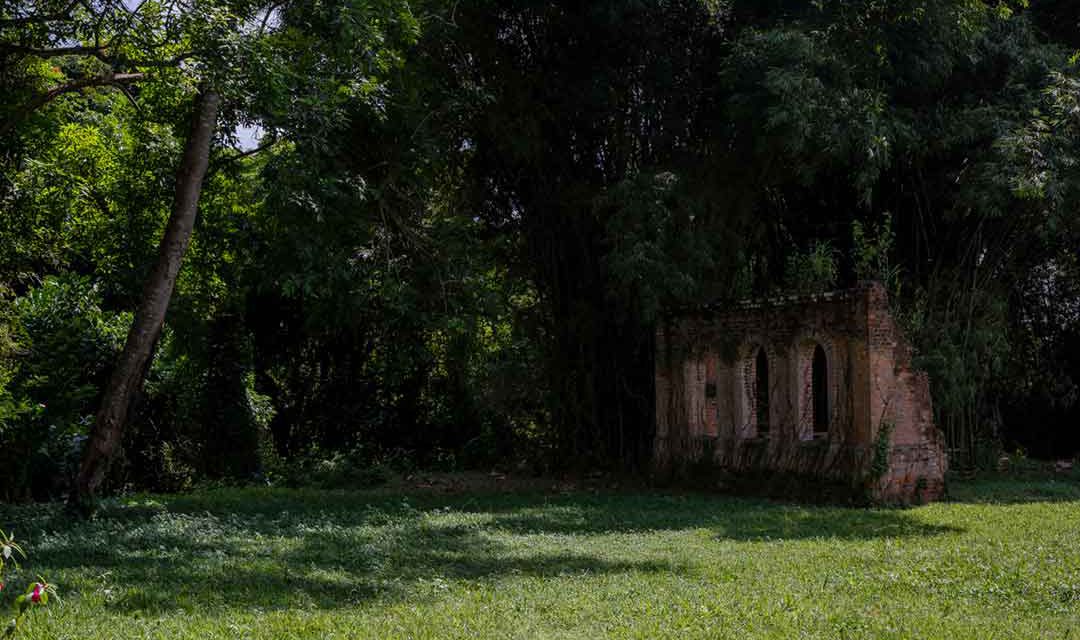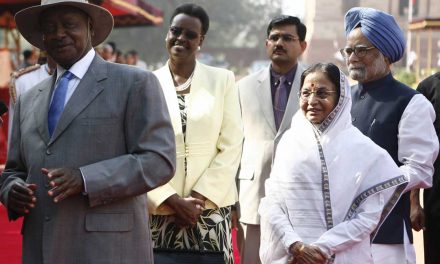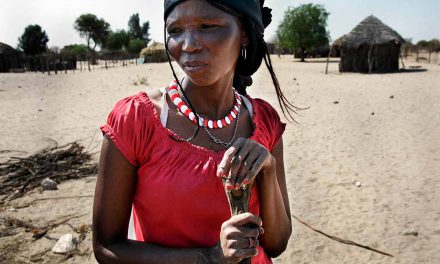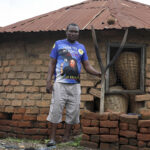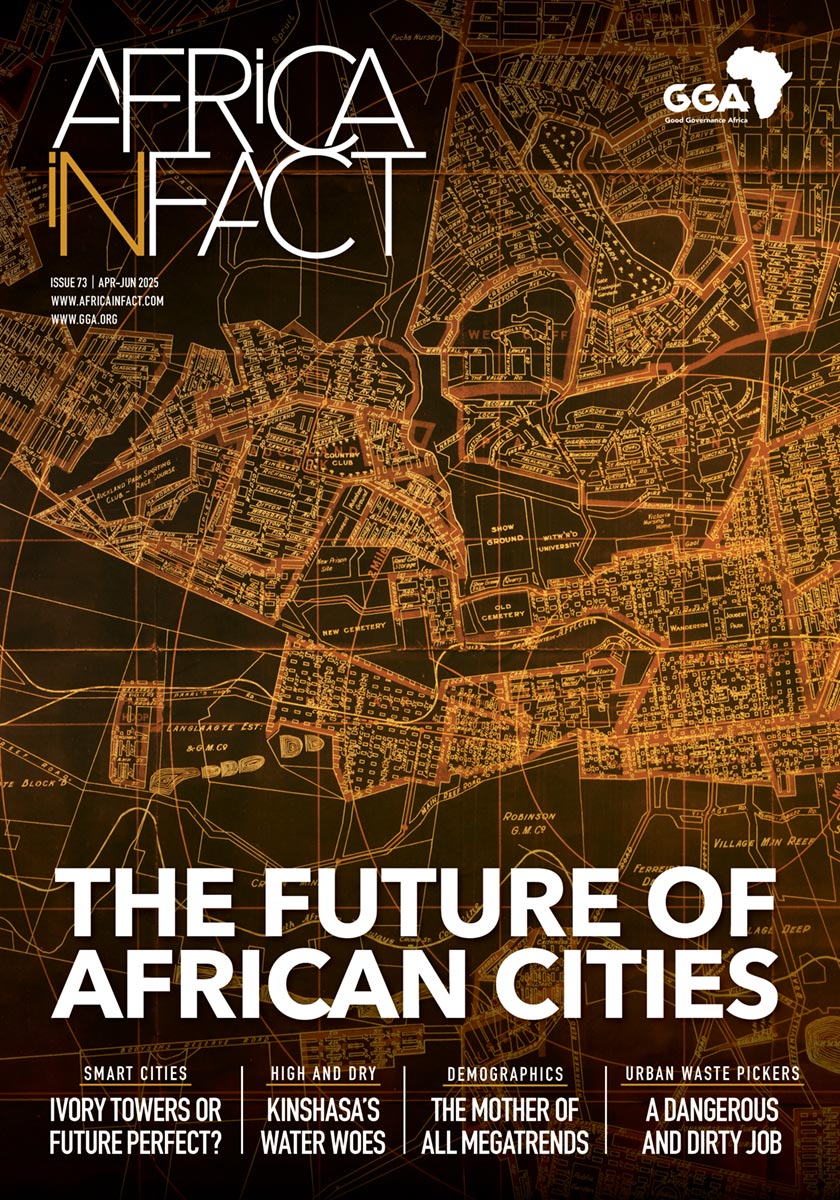Democratic Republic of the Congo: tourism
A privately-funded initiative in this central African country is helping to protect a pristine environment
By Helen Grange
The Democratic Republic of Congo (DRC) is home to the second largest rainforest in the world after the Amazon, but commercial logging and farming have also caused it to be one of the most endangered ecosystems in the world. The rapid deforestation of this enormous green lung, spanning approximately 1.5 million square miles, is also a threat to the hundreds of mammalian species living there. Some 39 of them are found nowhere else on earth, including the mountain gorilla, the bonobo—our closest living relative—and the giraffe-like okapi. The unquenchable global thirst for natural resources means that the richly endowed rainforest of the DRC, is, more than ever, a target for traders, legal and illegal. China, in particular, is vigorously invested in logging in the Congo, fetching up to $100,000 for one sizeable tree on the Chinese market, according to Chris Marais, CEO of Leadership for Conservation in Africa (LCA). However, there is an oasis of hope in a tourism development project in the remote north west of Congo, in the Odzala-Kokoua National Park.
One of Africa’s oldest national parks, it covers about 13,600m2 of pristine rainforest, a wilderness of forest, river, marsh and swamp. And quietly leading this exemplary piece of African conservation work is an unlikely figure, a publicity-averse German philanthropist called Sabine Plattner. Ms Plattner, 65, is the wife of Hasso Plattner, the billionaire co-founder of the software company SAP, and a woman impassioned by nature conservation. She lives on a farm in Yzerfontein in South Africa’s Western Cape province, but has been in and out of the Congo over the past 10 years to attend to her project there. To support the introduction of tourism infrastructure to Odzala- Kokoua National Park, which will ultimately enable the park to sustain itself, she has established the Congo Conservation Company (CCC), a private entity. She is also on the board of Cape Town based LCA, her partner organisation in Odzala- Kokoua National Park.
“Before our intervention here in 2007, this part of the Congo was very neglected. There was no means to generate revenue in Odzala-Kokoua, and the village communities around the forest were disillusioned and unmotivated,” says Paul Telfer, the CEO of CCC and Plattner’s business partner. Since then, Ms Plattner and LCA have contracted Africa Parks Network (APN)—a highly regarded, non-profit company that manages and rehabilitates national parks in Africa) to manage Odzala-Kokoua, and with a multimillion- Euro commitment from Ms Plattner’s own resources—to build three luxury lodges in the park, along with an airstrip and a road. Odzalo-Kokoua Park is home to about 15,000 forest elephants as well as mountain gorillas, bongo (antelope) and other remarkable species of primate and mammal. Ms Plattner’s intention is that all the revenue generated from tourism here goes back into the community.
At present there are no logging concessions in Odzala-Kokoau Park, although a suggestion to grant one might be made to the Congolese government, the owner of the logging concessions, if conservation in the area might benefit from it, says the manager of the park, Leon Lamprecht, of APN. “We support Sabine Plattner’s tourism concession here with the maintenance of infrastructure, and the mere fact that the park is well managed by APN creates a tourism product that can sell to tourists. A logging concession, practiced along ecological principles, may enhance sustainability of the park in future, but for now, we are just managing and overseeing general habituation,” he says. Rainforest conservation aside, Ms Plattner is a household name in the local village communities, as she supports—through her Sabine Plattner African Charities organisation—a variety of additional projects including the construction and operations of community centres that provide early childhood development projects, youth projects and basic skills training.
She has been doing this kind of work for decades, starting with disadvantaged young people in South African communities. This kind of selfless, step-by-step approach has forged a meaningful path for the Congo’s conservation efforts as a whole. Fortunately, the Congolese government is supportive of a more conservative logging policy than was practised in the past. “The Congo has a fairly visionary conservation policy, and the minister of forestry and sustainable development of the Congo (Henri Djombo) is working closely with the parks and NGOs, giving them wide latitude to exercise good conservation practices,” says Mr Telfer. Mr Marais says the “conservation commerce” mode—that is, ploughing tourism revenue back into the community which Ms Plattner pioneered in the Congo—is to be replicated in other parks in the country, including Nouabal-Ndoki National Park of almost 4,000km2.
“Odzala- Kokoau has offered a solution for other parks in the Congo, which would otherwise be threatened due to the pressures of market demand, not only for trees but for bushmeat and ivory. Tourism creates revenue, but also increases vigilance which disables poachers and illegal traders,” says Mr Marais. Tourism in the Congo is growing, albeit markedly more slowly than other destinations on the continent. The UN World Tourism Organisation forecasts 4% growth this year in the tourism industry in Africa, with South Africa in the lead, followed by Morocco, Mauritius and Mahe Island in the Seychelles. A survey by global flight search and travel deals platform, Cheapflights.co.za, found that searches to African countries are coming predominantly from the UK and Germany, with 14% and 13% of all searches to the continent respectively.
South Africans are also travelling more into their own continent, the survey found. Mauritius, Tanzania, Mozambique, Madagascar, the Seychelles and Morocco were all within the top ten searched African destinations for South Africans, with Congo being among the least popular destinations along with Uganda. Inbound tourists to Congo in 2014 numbered only 373,000, according to the World Bank data. This is unfortunate. Congo, Africa’s second largest country after Algeria, was a prime tourism destination before the 1990s, when the region was stable. It features spectacular tropical rainforests and wildlife, and boasts two UNESCO World Heritage Sites, Virunga National Park to the north, where nearly half of the world’s gorilla population lives, and the Kahuzi-Biega National Park outside Bukavu in the west. In the east, volcanic peaks rise thousands of meters above the surrounding rainforest.
In the aftermath of the Rwandan genocide, civil wars, poaching and lack of funding to the parks have since taken a heavy toll on Congo’s tourism, but thanks to the commitment of conservationists like Ms Plattner, ecotourists— people seeking authentic local experiences and opportunities to give back to the communities they visit—are still venturing into this part of the world.
Helen Grange is a seasoned journalist and editor, with a career spanning over 40 years writing and editing for newspapers and magazines in South Africa. Her work appears primarily in Independent Online (IOL), The Citizen and Business Day newspapers, focusing on business trends, women’s empowerment, entrepreneurship and travel. Magazines she has written for include Noseweek, Acumen, Forbes Africa, Wits Business Journal and UJ Alumni magazine. Among NGOs she has written or edited for are Gender Links and INMED, a global humanitarian development organisation.

